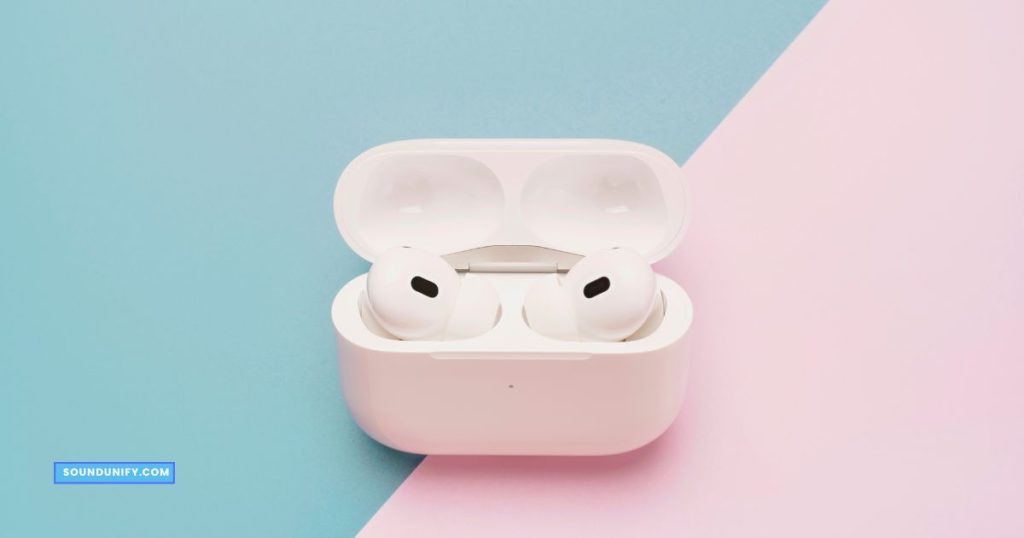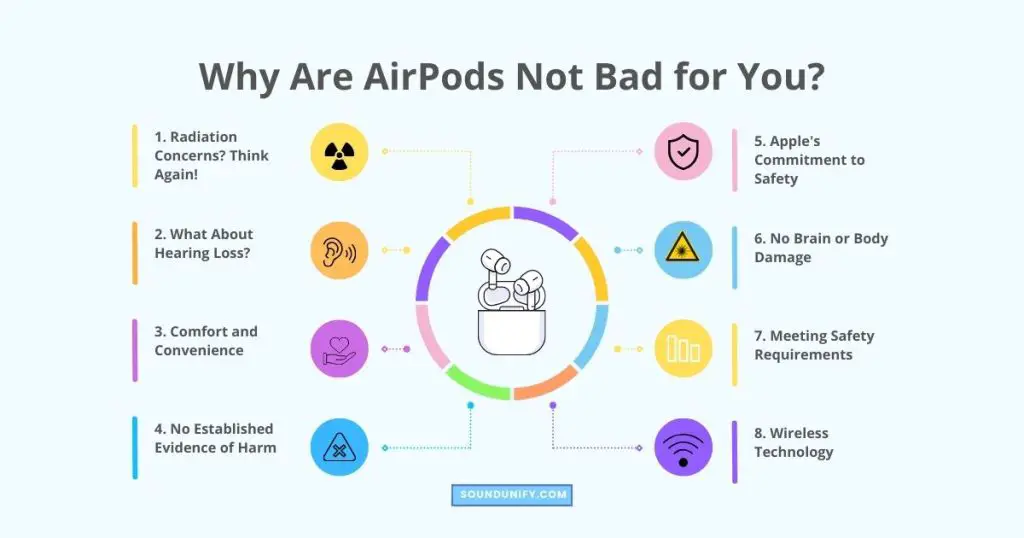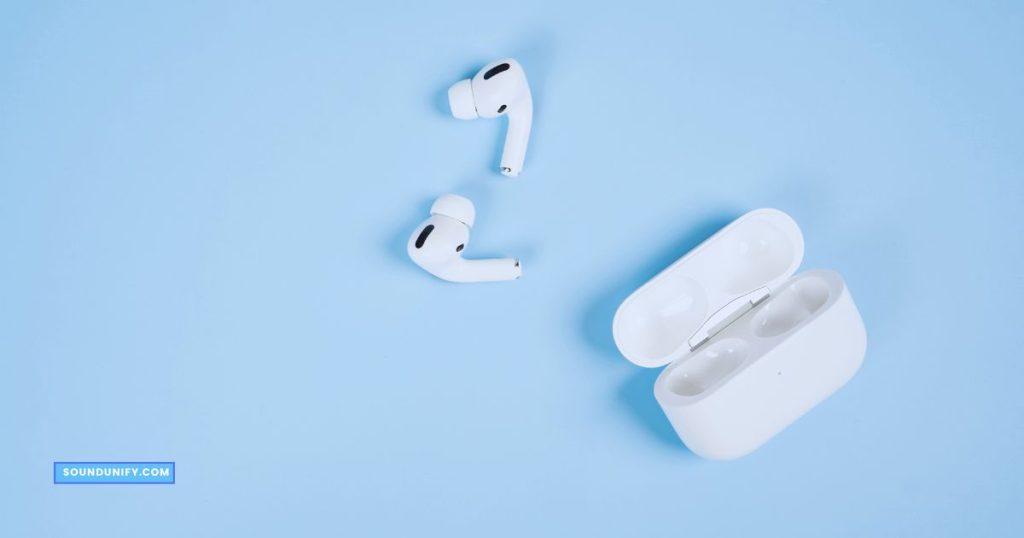No, AirPods aren't inherently bad for you, but how you use them could be. Volume and duration matter.
Let’s talk about AirPods—the sleek, white earbuds nearly everyone seems to own. I’m as guilty as anyone. I wear mine while I jog, while I work, and even while I do the dishes. They’re convenient, but they’ve also got us all wondering: Are we making a trade-off between convenience and our health?
You’ve seen the headlines screaming about hearing loss, ear infections, and even concerns about radiation. Heck, I’ve had my own late-night Google sessions, led by the nagging thought that maybe, just maybe, these little devices aren’t as benign as they seem. Is the portability and convenience worth compromising my well-being?
In this post, we’ll dive deep into the science, sift through the myths, and give you the low-down on what you need to know. So stick around, especially if you’re wearing AirPods right now. Trust me, you’ll want to hear this.
How Do AirPods Work?

AirPods connect devices using Bluetooth, a short-range technology that doesn’t need cables. The AirPods use Apple’s special chip, either the H1 or H2. This chip makes the Bluetooth connection better by improving range and performance.
Initiating a connection with AirPods is a breeze. When you open the AirPods’ charging case, they go into pairing mode. This means they are ready to connect with nearby devices that have Bluetooth. To pair them with an iPhone, iPad, or Mac, close the charging case to the desired device and adhere to the on-screen prompts.
Once paired, AirPods become an audio companion, allowing you to listen to music, call, and even interact with Siri. The devices have microphones to record your voice and send it to the connected device.
AirPods’ built-in sensors are a standout feature that can discern when they’re placed in or taken out of your ears. This smart detection pauses audio when an AirPod is removed and resumes it once reinserted.
Furthermore, AirPods have sensors that recognize when positioned in your ear, enabling features like Transparency mode. This mode permits ambient sounds to filter through, letting you stay aware of your environment without removing the AirPods.
AirPods have garnered immense popularity as wireless earbuds due to their nature, comfort, sound quality, and competitive pricing compared to other market offerings.
To delve deeper into the AirPods’ functionality:
- Opening the charging case activates the AirPods’ pairing mode.
- Devices in proximity will recognize the AirPods, presenting a connection prompt.
- By selecting “Connect,” the AirPods establish a bond with the device.
- Once connected, the AirPods are ready for audio playback, calls, and Siri interactions.
- The AirPods’ suite of sensors includes:
- Optical sensors: Identify when AirPods are in or out of your ears.
- Accelerometers: Check the AirPods’ movements.
- There are force sensors on the stems of the AirPods. They let you control playback and volume by pressing them.
- The H1 or H2 chip improves Bluetooth and adds features like an automatic switch and Siri.
Why Are AirPods Not Bad for You?

Those sleek, wireless earbuds from Apple have become a cultural phenomenon. But wait, are they bad for you? I’ve heard the rumours, and so have you.
Let’s debunk some myths and dive into why AirPods are not the villains they’re made out to be.
1. Radiation Concerns? Think Again!
Regarding AirPods, one of the most common concerns I hear about is radiation. But let’s set the record straight:
- Type of Radiation: AirPods, like all Bluetooth devices, emit a type of radiation known as non-ionizing radiation. This vastly differs from the ionizing radiation we associate with X-rays or nuclear energy.
- Safety Levels: AirPods’ radiation is well below the safety limits set by international standards. The radiation levels are so low that they’re comparable to those emitted by everyday household devices.
- World Health Organization’s Stance: The WHO has clearly stated that no concrete evidence links low-level electromagnetic fields (like Bluetooth devices) to health risks.
| Aspect | Details |
|---|---|
| Radiation Type | Non-ionizing |
| Safety Standards | Well below international limits |
| WHO’s Position | No confirmed health risks |
While it’s always good to be cautious, the radiation concerns surrounding AirPods are largely unfounded. They’re safe to use, and their radiation is minimal and non-harmful.
2. What About Hearing Loss?
Hearing health is a significant concern for many, especially given the rise in earbud usage. AirPods, however, come with features designed to protect your hearing health. The earbuds offer a range of volume settings, allowing you to adjust the loudness to a comfortable and safe level. This volume control is a critical feature for preventing hearing loss.
Moreover, Apple has incorporated safety features that allow you to set a maximum volume limit on your device. This safeguards against potential hearing damage, ensuring you don’t accidentally expose your ears to harmful sound levels.
The National Institute on Deafness and Other Communication Disorders (NIDCD) recommends keeping the volume at 70% or lower, especially during extended listening sessions, to mitigate the risk of hearing loss. This guideline serves as a useful benchmark for safe listening.
3. Comfort and Convenience
AirPods have set a new standard in wireless earbuds, particularly in comfort and convenience. The earbuds are ergonomically designed to fit various ear shapes and sizes. This ergonomic design ensures you can wear your AirPods for extended periods without experiencing discomfort.
The wireless nature of AirPods also adds a layer of convenience that wired earbuds can’t match. Being free from the hassle of tangled wires means you can move more freely, whether working out, commuting, or simply relaxing at home.
Another noteworthy feature is the open-air design, which allows a certain amount of ambient noise to filter through. This is particularly important for those who want to remain aware of their surroundings. It makes AirPods a safer choice for outdoor activities like jogging or cycling.
| Feature | Benefit |
|---|---|
| Ergonomic Fit | Designed for extended comfort |
| Wireless Design | Enables hassle-free mobility |
| Open-Air Design | Allows for situational awareness |
4. No Established Evidence of Harm
In wireless technology, concerns about potential health risks are not uncommon. However, regarding AirPods, extensive research and studies have been conducted to understand potential harm. The consensus among the scientific community is clear: there is no established evidence that AirPods cause harm to users.
Numerous studies have investigated the effects of non-ionizing radiation, the type emitted by Bluetooth devices like AirPods. These studies have consistently found that the radiation levels emitted by such devices are far too low to cause adverse health effects. It’s essential to differentiate between high-energy ionizing radiation, which can be harmful, and low-energy non-ionizing radiation emitted by AirPods.
5. Apple’s Commitment to Safety
As a global tech leader, Apple prioritizes its users’ safety and well-being. The company is committed to ensuring that all its products, including AirPods, meet or exceed established safety standards. Apple doesn’t rely on external guidelines; they conduct rigorous testing to ensure product safety.
Every iteration of AirPods undergoes a series of comprehensive tests and evaluations. These tests ensure the product is safe for everyday use and poses no health risks. Apple also stays updated with the latest research and adjusts its safety protocols accordingly.
Apple’s commitment to safety is evident in the design and functionality of AirPods. From volume control features to prevent hearing damage to ensuring radiation emissions are within safe limits, Apple takes a proactive approach to user safety.
6. No Brain or Body Damage
One of the most alarming concerns some people have about wireless earbuds is the potential for brain or body damage. However, these concerns are largely unfounded when we delve into the science and facts.
- Type of Radiation: As mentioned earlier, AirPods emit non-ionizing radiation. This type of radiation doesn’t have the energy to damage the DNA in cells, which is a primary concern when discussing radiation-related health risks.
- Safety Limits: The radiation levels emitted by AirPods are well below the safety thresholds set by health organizations. These limits are set after extensive research and are designed to ensure user safety.
- Research Findings: Numerous studies have investigated potential links between Bluetooth radiation and health issues. The overwhelming majority of these studies have found no evidence of harm.
| Aspect | Details |
|---|---|
| Radiation Type | Non-ionizing |
| Safety Standards | Below established limits |
| Research Conclusions | No evidence of harm |
7. Meeting Safety Requirements
When it comes to consumer electronics, safety is paramount. AirPods, a product of Apple, is no exception to this rule. They undergo rigorous testing and evaluations to ensure they meet and often exceed the safety requirements set by regulatory bodies worldwide.
- Regulatory Compliance: AirPods are designed to comply with all local and international safety standards. This includes standards set by organizations like the Federal Communications Commission (FCC) and the World Health Organization (WHO).
- Testing Protocols: Before AirPods hit the market, they undergo stringent tests. These tests evaluate everything from radiation emissions to battery safety. Apple ensures that every aspect of the AirPods meets the highest safety standards.
- Continuous Monitoring: Safety doesn’t stop once the product is released. Apple continues to monitor the safety of its products post-launch, incorporating feedback and making necessary adjustments in subsequent iterations.
8. Wireless Technology
The advent of wireless technology has revolutionized the way we connect and communicate. AirPods’ seamless wireless connectivity is a testament to this technological evolution. But what does this wireless capability entail?
- Bluetooth Connectivity: Bluetooth technology is at the heart of AirPods’ wireless capability. Bluetooth allows for short-range wireless communication between devices, eliminating the need for cumbersome wires and cables.
- Low Energy Consumption: One of the standout features of Bluetooth, especially the version used in AirPods, is its low energy consumption. This ensures that while your AirPods provide a seamless connection, they do so without rapidly draining your device’s battery.
- Interference Management: A common concern with wireless technology is interference from other devices. However, Bluetooth technology, especially in AirPods, is designed to minimize interference. This ensures a clear, uninterrupted listening experience, even in areas with multiple active Bluetooth devices.
Potential Health Risks of AirPods

here are the potential health risks associated with AirPods in a concise listing format:
- Hearing Loss: Extended exposure to loud volumes can damage the inner ear’s tiny hair cells, leading to permanent hearing impairment.
- Ear Infections: Without regular cleaning, AirPods can accumulate earwax, dirt, and bacteria, potentially leading to ear infections.
- Dizziness and Balance Problems: Prolonged use, especially with noise-cancelling models like AirPods Pro, can sometimes cause dizziness or balance issues due to the noise isolation effect.
- Allergic Reactions: Some users might experience allergic reactions to the materials used in AirPods, manifesting as itching, redness, or swelling in the ears.
It’s essential to note that while these are potential risks, many users use AirPods without experiencing any adverse effects. Regular cleaning, safe volume levels, and taking breaks during extended use can help mitigate some of these concerns.
How to use AirPods safely?

Using AirPods safely involves maintaining ear health, ensuring device hygiene, and understanding the technology. Here’s a guide on how to use AirPods safely:
1. Listening Volume
It’s essential to prioritize your ear health when using AirPods. Listening to music at a moderate volume is crucial.
While turning up your favorite songs might be tempting, consistently high volumes can lead to long-term hearing damage.
Keeping the volume at a level where you can still be aware of your surroundings is always beneficial, especially outdoors.
2. Taking Breaks
Continuous listening, even at moderate volumes, can strain your ears. It’s a good practice to take breaks from your AirPods. Many experts recommend the 60/60 rule: keep the volume under 60% of the maximum and give your ears a rest after 60 minutes of listening.
3. Hygiene and Cleaning
Your AirPods can become a hub for earwax, dirt, and other debris. Regular cleaning is vital for optimal sound quality and reducing the risk of ear infections. A soft, dry cloth for the exterior and a gentle tool for the mesh areas will keep them clean.
4. Proper Fit
Ensuring that your AirPods fit correctly in your ears is essential. They should be snug and secure. Incorrect positioning can lead to reduced sound quality and might increase the likelihood of turning up the volume, which can harm your ears.
5. Choosing the Right Ear Tips
AirPods Pro offers various ear tip sizes. Finding the right fit isn’t just about comfort; it also provides better sound quality and noise isolation. Spend time trying different sizes to determine the best fit for your ears.
By adhering to these guidelines, you can enjoy your AirPods while ensuring you're using them safely and effectively.
Are AirPods Bad for Your Brain?
No, AirPods are not proven to be bad for your brain.
AirPods, like other Bluetooth devices, emit non-ionizing electromagnetic radiation. The type of radiation from Bluetooth earbuds is different from the harmful radiation from X-ray machines. But people worry because they are close to the brain.
However, the current scientific consensus indicates that the radiation levels from Bluetooth devices, including AirPods, are too low to cause harm. Organizations such as the World Health Organization (WHO) have emphasized that the radiation levels from such devices are significantly below harmful thresholds.
Some studies have said that long-term exposure to electromagnetic fields from Bluetooth can cause problems. But there isn’t enough evidence to prove it. It’s always wise to stay informed with ongoing research and use technology responsibly.
Dive into the Best AirPod Alternatives of 2023
- 🌟 Sony WF-1000XM5: Dive into an immersive sound experience! With top-tier sound quality, unbeatable noise cancellation, and a snug fit, these earbuds are essential for every audiophile. Lightweight and sleek, they’re perfect for on-the-go tunes.
- 🌟 Bose QuietComfort Earbuds II: Crave silence in a noisy world? Bose has you covered. Renowned for their stellar noise cancellation and plush comfort, these earbuds promise a sound experience. Plus, with their extended battery life, your playlists just got longer.
- 🌟 Samsung Galaxy Buds Pro 2: A harmonious blend of style and function. Enjoy active noise cancellation, lasting comfort, and marathon-worthy battery life. Samsung lovers, rejoice! Seamlessly switch between devices with just a tap.
- 🌟 Jabra Elite 7 Pro: Elevate your listening game! Jabra offers pristine sound quality, effective noise cancellation, and a fit so comfortable you’ll forget they’re there. The long battery life and multipoint pairing are just cherries on top.
- 🌟 Google Pixel Buds Pro: These buds are a dream come true for Google enthusiasts. Dive into rich sound, enjoy active noise cancellation, and stay comfy all day. Bonus: Real-time language translation for those international adventures!
FAQs
Can AirPods cause cancer?
No, there is no conclusive scientific evidence to suggest that AirPods or any Bluetooth earbuds cause cancer.
Can AirPods damage my hearing?
Yes, if used at high volumes for extended periods, AirPods can contribute to hearing loss, just like any other earphone.
Are AirPods safe for children to use?
Yes, but with supervision. Keep the volume low and limit usage time to protect your child’s hearing.
How can I clean my AirPods safely?
Use a soft, dry cloth for the exterior and a soft-tipped tool for the mesh areas. Make sure they are completely dry before using them again.
Final Thoughts
So, are AirPods bad for you? Not necessarily. They’re sleek and handy, but using them excessively can pose risks. Loud volumes may harm hearing. Wireless tech has its debates. Still, definitive dangers aren’t proven. Use wisely: keep volumes down, rest your ears, and maintain hygiene. Balance is crucial.
James Dimento is a Chief-in-Editor of SoundUnify. He is a headphone enthusiast and creative writer passionate about audio technology. He has three years of experience writing about headphones and sound quality and is responsible for creating reviews and taking care of all administration.
